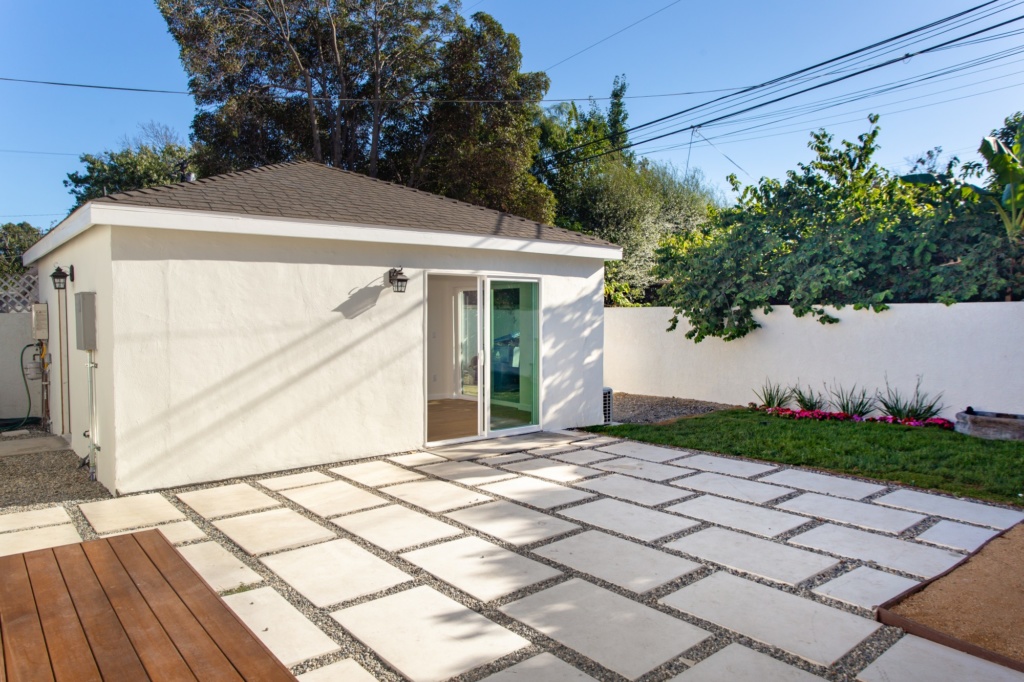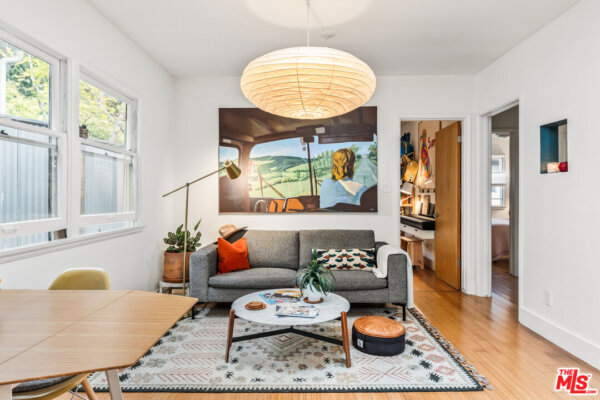Everything You Need to Know About ADUs

Updated January 22, 2021: They’ve been colloquially referred to as “granny flats” but, these days, granny and grandpa are staying in their family homes for longer and Angelenos are using these back houses as rentals, retreats, creative office spaces, and more. People with existing extra spaces have been getting good use out of them; plus, other homeowners have been jumping on the bandwagon by building their own Accessory Dwelling Units. An additional unit on your property could be really useful and it could also be a lucrative long-term investment. Does that pique your interest? Not sure how to get started? Luckily, we’ve done the research ourselves and compiled information from many sources to break down the basics for you.
What is an ADU?
According to the Los Angeles County Department of Regional Planning, “An ADU is a dwelling unit with a full kitchen and bathroom, which is an accessory use to a primary or main single-family residence. The ADU can be used as a rental, but cannot be sold separately from the primary or main single-family residence. The existing residence must be a legally established structure.”
ADUs can provide an easy source of rental income for homeowners and low-cost housing for renters. They also add manageable density to single-family areas where new apartment complexes would be difficult to construct. – Curbed
Researchers predict that ADUs could constitute over half of California’s new development over the next several decades. Alongside other ADU-friendly states, such as Minnesota and New Hampshire, and various cities throughout the Pacific Northwest, California is poised to help develop best practices for maximizing property value with ADUs throughout the U.S. – Forbes
Citywide, there are an estimated 50,000 secondary units on residential lots, from mother-in-law cottages to converted garages. But many of them lack permits, and many more potential ADUs have never come to fruition because of issues like the cost to build extra parking that outdated city codes required.
A series of state laws enacted in January 2017 lifted many of those barriers. As a result, about 2,000 permits were requested in L.A. last year, a 658 percent increase from the average between 2012 and 2016, according to city data. With half a million single-family lots citywide, the mayor’s office once argued there’s room for an even greater increase, which is where city hall’s Innovation Team comes in. “If we permit them, families build them,” says its director, Amanda Daflos. – Los Angeles Magazine

Why would someone want to do an ADU?
- If you’re looking for an additional unit for a multi-generational family so they all live on the same lot but in their own homes.
- If you’re looking for a rental unit with income potential
- If you’re looking for a guest house
- Or if you just need more space
Am I allowed build an ADU on my property? What are the rules and requirements?
In general, an ADU is permitted with a Site Plan Review if:
- The property is zoned R-1, R-2, R-3, R-4, R-A, A-1 and A-2, or another zone where a single family residence (SFR) is allowed by right with a plot plan (ministerial review).
- Only one legal SFR exists on the property or is proposed to be built concurrently with the ADU.
- You propose to convert an existing guest house, mobile home, or caretaker’s residence to an ADU.
An ADU is not permitted if the property:
- Is not zoned to allow a SFR by-right
- The ADU is intended for sale separate from the primary SFR.
- Contains other habitable structures beyond the primary single-family residence, except a pool house accessory to an existing swimming pool.
For more details, see this document specific to Los Angeles County.
What are the updated laws for 2020?
As of January 1, 2020, homeowners who created accessory dwelling units (ADUs) without the required building permits may have the opportunity to bring their ADUs into compliance. For ADUs that were constructed without building permits, local building officials now have the option to inspect an ADU and apply the building standards that were in effect at the time the unit was constructed.
For a full rundown on the specifics, the California Chapter of the American Planning Association created a helpful webinar.
The American Institute of Architects (AIA) also put together their own online resource center just for ADU information,

How would I get started?
Local prefab company Cover has built a tool that tells LA homeowners what, exactly, they can build in their backyards.
According to Cover CEO Alexis Rivas, the tool is designed to get homeowners over the first few hurdles for adding an ADU, which otherwise might require hiring an architect to navigate local zoning regulations and property laws.

How much does it cost?
Based on our team’s conversations with some local architects, it seems that the cheapest someone could build an ADU for would depend on if it was from the ground up or from an existing structure. It would also several other factors (i.e. where is the sewer line, power, gas line, parking etc.) If it was as simple as converting an existing 2 car garage and all the utilities were close you’re talking maybe $125k-$175k for a very basic, simple unit. That is if all the stars align.
Technology and Prefab Solutions
According to the NAHB/Wells Fargo Housing Market Index in 2019, the cost and availability of skilled labor was one of the top challenges builders faced in 2018 and expected to face in 2019…
That’s where prefab construction comes in.
Not to be confused with manufactured homes, prefabricated homes are also built in an indoor plant and shipped and erected on site, however, they fall under the same code as stick-build homes. The smaller size of ADUs fits in perfectly with prefab manufacturing and companies are taking notice, including the likes of Amazon.
Prefabricated and 3D printed home technology are gaining momentum at a time when skilled labor and affordable housing shortages are forcing state legislators to look at all options. If California successfully pushes ADUs into the mainstream, other states will follow. [source: Forbes]
Are there any incentive programs I could take advantage of?
The city is exploring incentive programs—including novel loans —to encourage more property owners to build and rent their extra units at affordable prices. And it’s put together a handbook in partnership with UCLA to guide people through the process.

What kind of a return on investment can I expect?
If you were to build an ADU — a 650 sq ft 1 bedroom, 1 bath unit for $200,000, assuming you could rent it for approximately $2500/month in Venice or Mar Vista ($30,000 per year), it would take you 6.6 years to pay yourself back for the cost to build ($200k/$30k annual income = 6.6 years). After 6.6 years, it would be pure profit $30k annual rental income. That would be a 15% return annually on your initial investment of $200k over time.

Pardee Properties is a real estate brokerage specializing in helping people buy, sell, and lease houses, condos, and commercial properties throughout the Westside of Los Angeles and beyond.
Our experienced and highly-rated real estate agents are experts in knowing the local real estate markets where they live, work, and play. From the Venice Beach Boardwalk to the private hilltop estates of Mandeville Canyon in Brentwood, from the hip and highly walkable downtown area of Culver City to the condo buildings of Playa Vista with their desirable amenities, located just a short bike ride away from the offices of some of the biggest tech companies in the world, no matter your lifestyle, we’ve got you covered.




